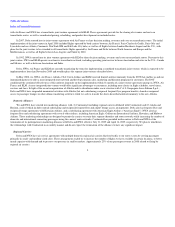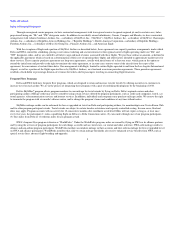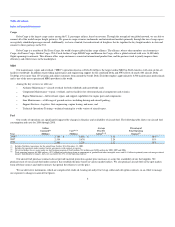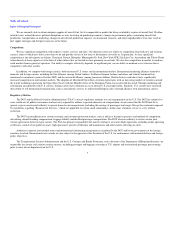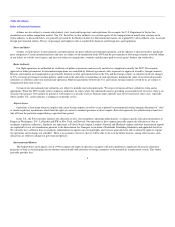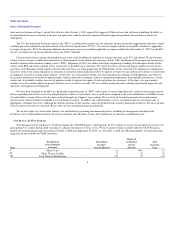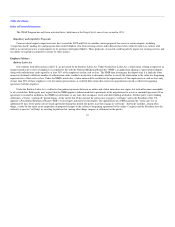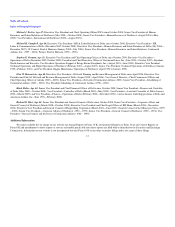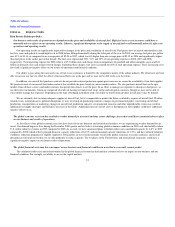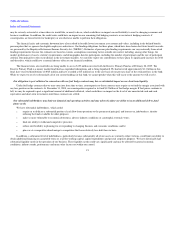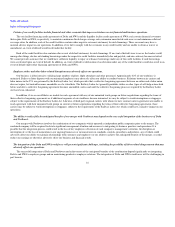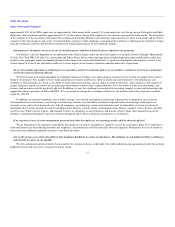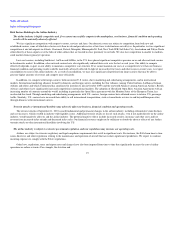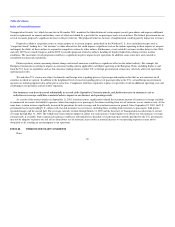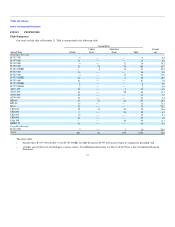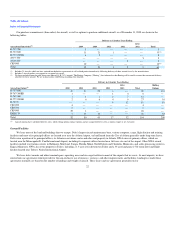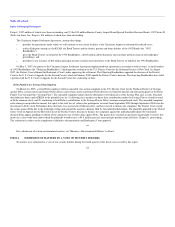Delta Airlines 2008 Annual Report Download - page 19
Download and view the complete annual report
Please find page 19 of the 2008 Delta Airlines annual report below. You can navigate through the pages in the report by either clicking on the pages listed below, or by using the keyword search tool below to find specific information within the annual report.
Table of Contents
Index to Financial Statements
ITEM 1A. RISK FACTORS
Risk Factors Relating to Delta
Our business and results of operations are dependent on the price and availability of aircraft fuel. High fuel costs or cost increases could have a
materially adverse effect on our operating results. Likewise, significant disruptions in the supply of aircraft fuel would materially adversely affect our
operations and operating results.
Our operating results are significantly impacted by changes in the price and availability of aircraft fuel. Fuel prices have increased substantially in the
last five years and spiked at record high levels in 2008 before falling dramatically during the latter part of the year. In 2008, our average fuel price per gallon
rose 41% to $3.16, as compared to an average price of $2.24 in 2007, which was 6% higher than our average price of $2.12 in 2006 and significantly higher
than fuel prices in the earlier part of this decade. The fuel costs represented 38%, 31% and 30% of our operating expense in 2008, 2007 and 2006,
respectively. Total operating expense for 2008 reflects a $7.3 billion non-cash charge from an impairment of goodwill and other intangible assets and $1.1
billion in primarily non-cash merger-related charges. Including these charges, fuel costs accounted for 28% of total operating expense. These increasing costs
have had a significant negative effect on our results of operations and financial condition.
Our ability to pass along the increased costs of fuel to our customers is limited by the competitive nature of the airline industry. We often have not been
able to increase our fares to offset the effect of increased fuel costs in the past and we may not be able to do so in the future.
In addition, our aircraft fuel purchase contracts do not provide material protection against price increases or assure the availability of our fuel supplies.
We purchase most of our aircraft fuel under contracts that establish the price based on various market indices. We also purchase aircraft fuel on the spot
market, from offshore sources and under contracts that permit the refiners to set the price. In an effort to manage our exposure to changes in fuel prices, we
use derivative instruments, which are comprised of crude oil, heating oil and jet fuel swap, collar and call option contracts, though we may not be able to
successfully manage this exposure. Depending on the type of hedging instrument used, our ability to benefit from declines in fuel prices may be limited.
We are currently able to obtain adequate supplies of aircraft fuel, but it is impossible to predict the future availability or price of aircraft fuel. Weather-
related events, natural disasters, political disruptions or wars involving oil-producing countries, changes in governmental policy concerning aircraft fuel
production, transportation or marketing, changes in aircraft fuel production capacity, environmental concerns and other unpredictable events may result in
additional fuel supply shortages and fuel price increases in the future. Additional increases in fuel costs or disruptions in fuel supplies could have additional
negative effects on us.
The global economic recession has resulted in weaker demand for air travel and may create challenges for us that could have a material adverse effect
on our business and results of operations.
As the effects of the global economic recession have been felt in our domestic and international markets, we are experiencing weaker demand for air
travel. Our demand began to slow during the December 2008 quarter and we believe worsening global economic conditions in 2009 will substantially reduce
U.S. airline industry revenues in 2009 compared to 2008. As a result, we have announced plans to further reduce our consolidated capacity by 6-8% in 2009
compared to 2008 (which reflects planned domestic capacity reductions of 8-10% and international capacity reductions of 3-5%), and have offered voluntary
workforce reduction programs for eligible employees. Demand for air travel could continue to fall if the global economic recession continues, and overall
demand may fall much lower than we are able prudently to reduce capacity. The weakness in the United States and international economies could have a
significant negative impact on our future results of operations.
The global financial crisis may have an impact on our business and financial condition in ways that we currently cannot predict.
The continued credit crisis and related turmoil in the global financial system has had and may continue to have an impact on our business and our
financial condition. For example, our ability to access the capital markets
14


